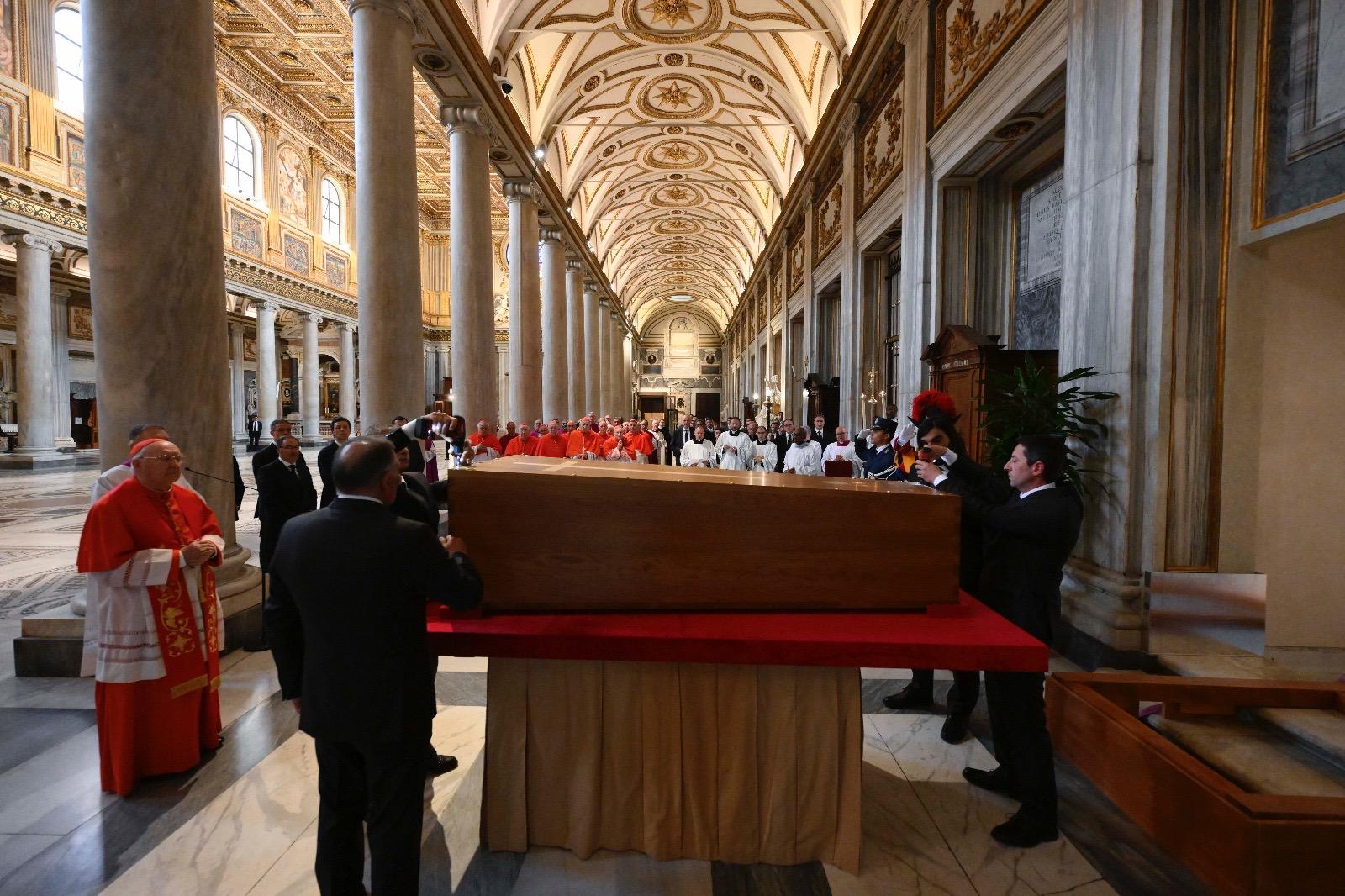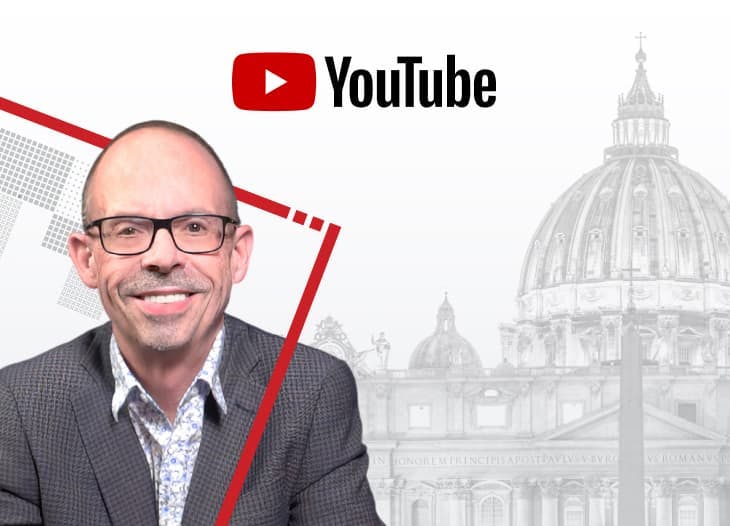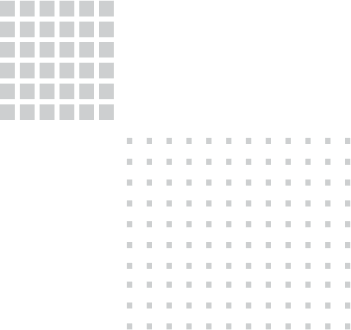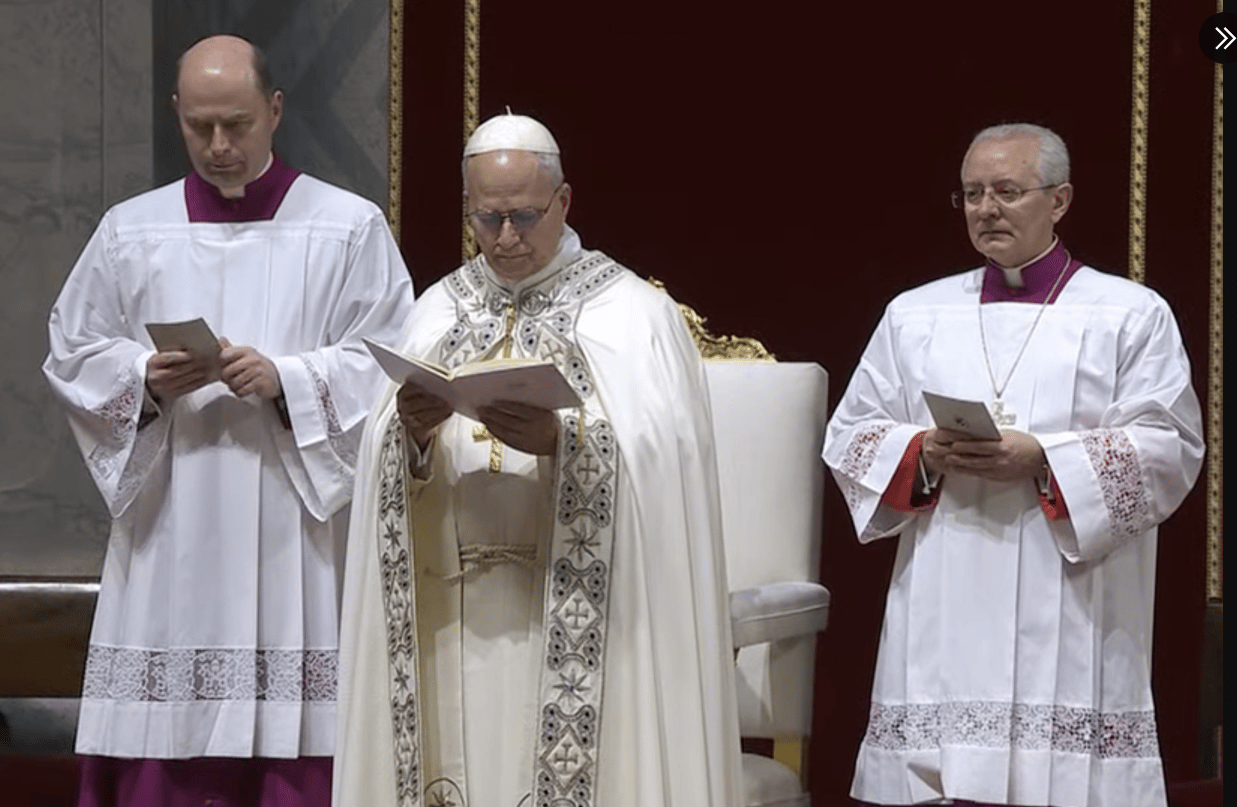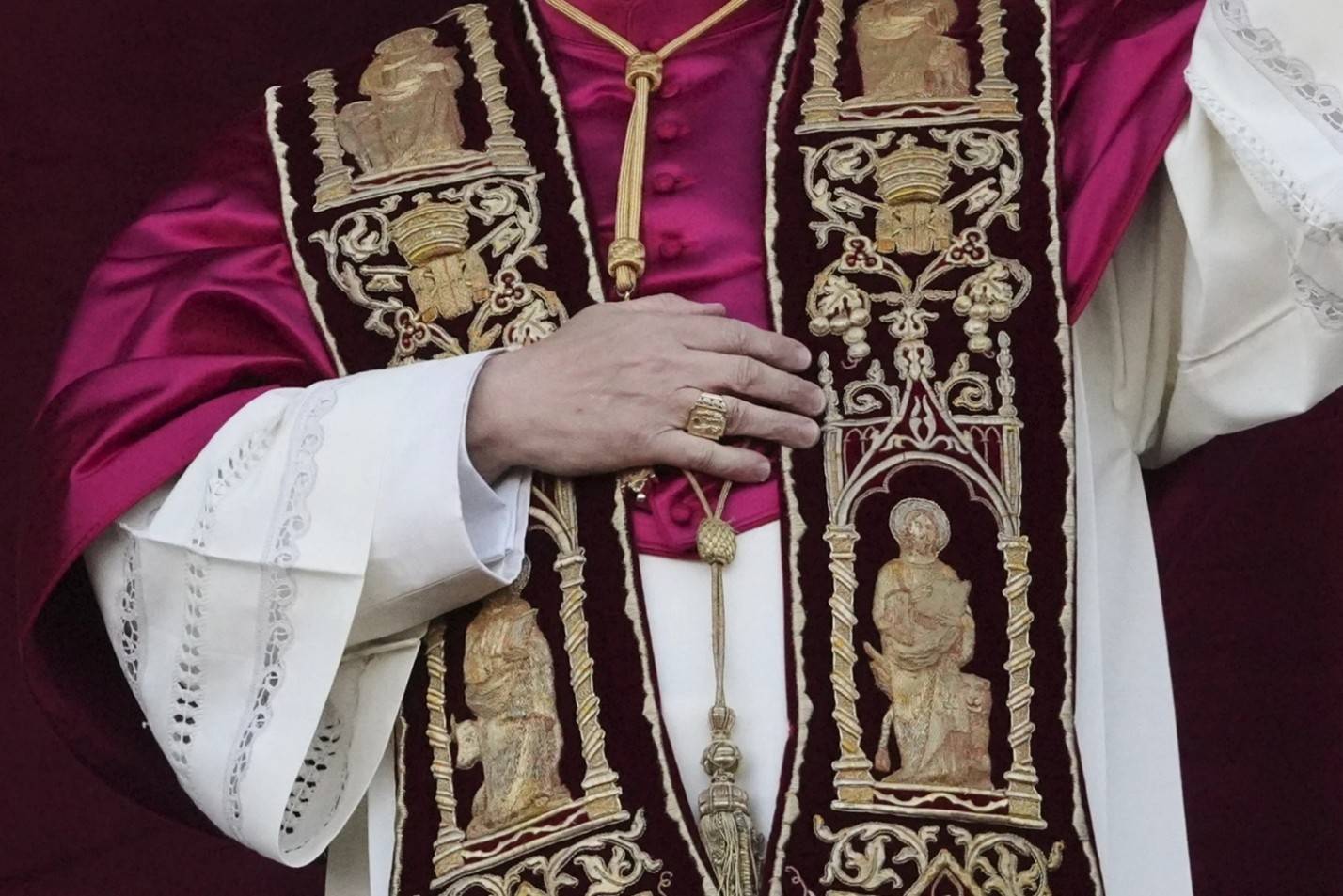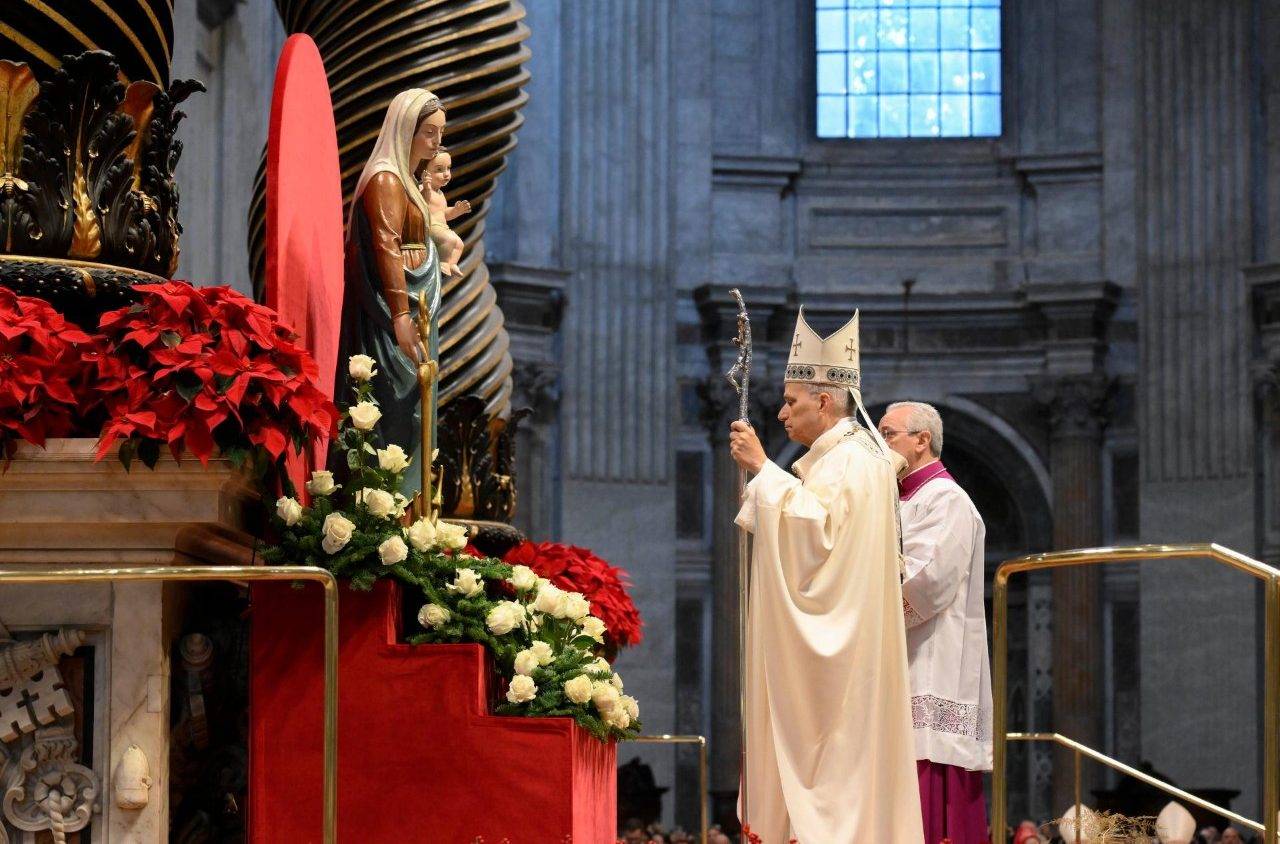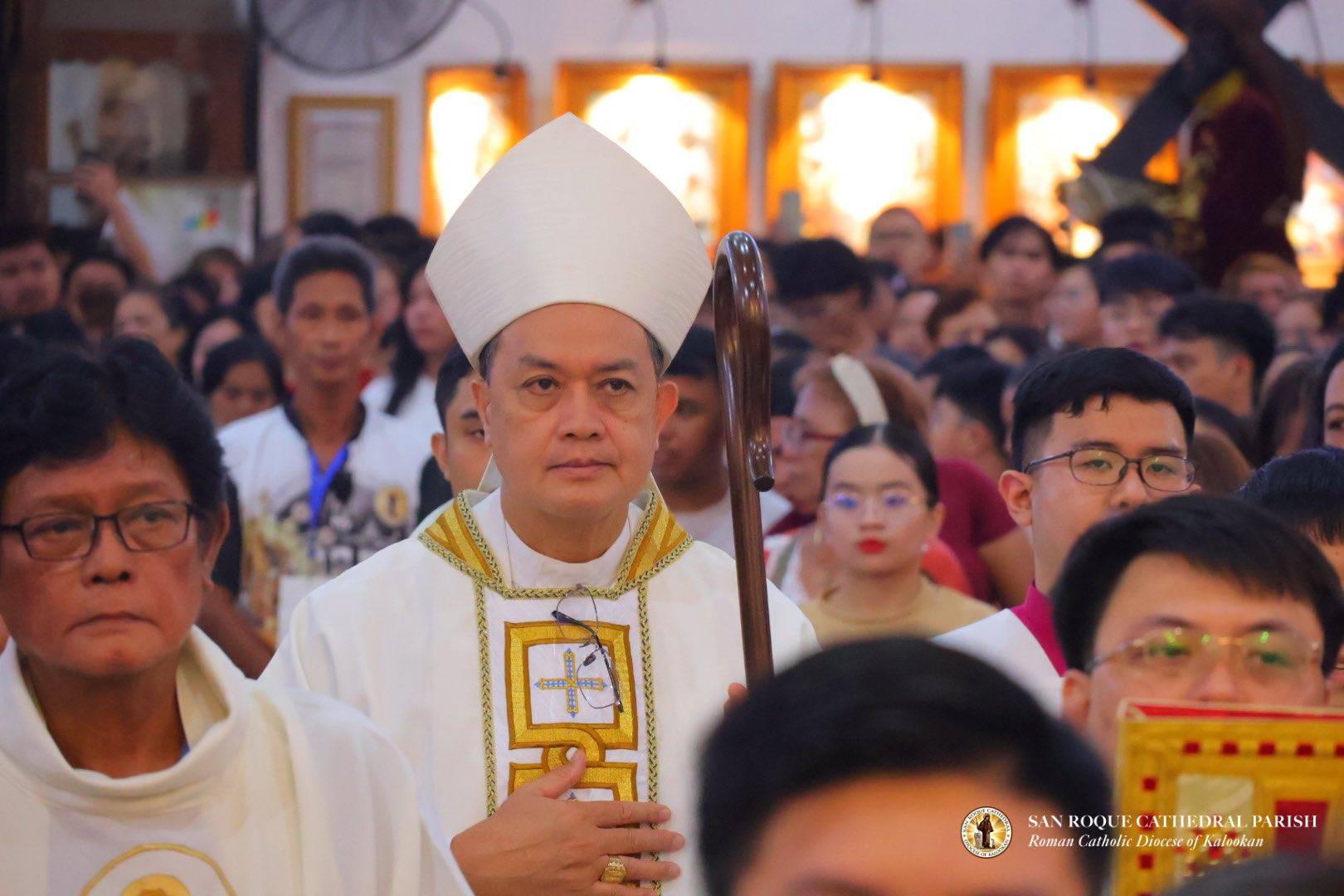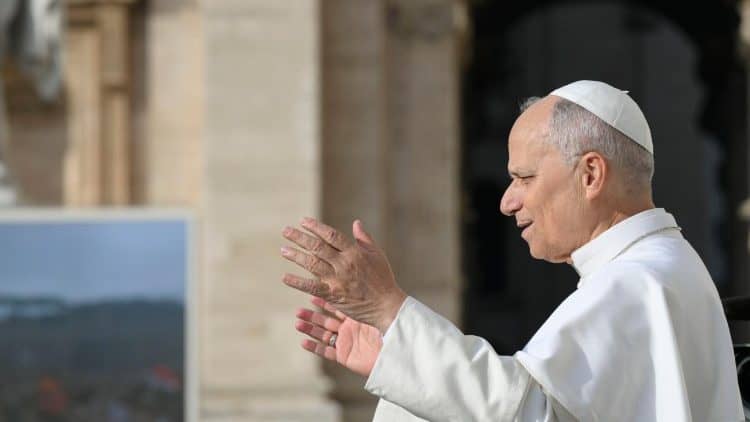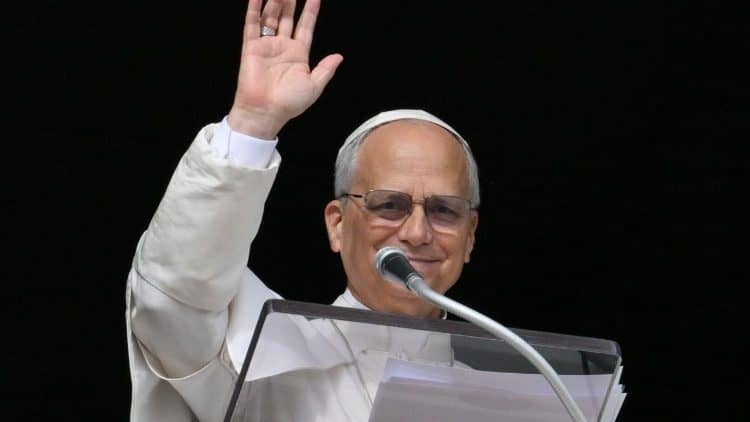ROME – In the final stage of his earthly journey, Pope Francis Saturday was entombed in the papal Basilica of Saint Mary Major as a sign of his deep devotion to Mary and his desire to be accessible to the people.
Some 150,000 people lined the streets to bid a final farewell to Pope Francis as his coffin was carried in an open popemobile during a historic procession from St. Peter’s Basilica to the Basilica of Saint Mary Major.
Described by veteran Vatican reporter and analyst Elizabetta Pique as “the last surprise of a pope of surprises,” the popemobile was an unexpected addition to the funeral motor procession, as observers had expected a dark hearse or a similar vehicle to carry the coffin to its final destination.
Once the pope’s coffin arrived to Saint Mary Major, it was welcomed by a group of poor and homeless, as a sign of those whom he most prioritized during his life and ministry.
Children then placed roses on the altar inside of the Pauline Chapel of the basilica, which houses the famed icon Maria Salus Populi Romani, or Mary Health of the Roman People, which Pope Francis visited after his election, and before and after every international trip.
In each of those visits, Francis himself would leave a bouquet of roses as a sign of his devotion to Mary, and his gratitude for the graces he’d received.
His last visit to the chapel came April 12, just before Holy Week and just over a week before he died. He’d driven to the basilica after being discharged from Rome’s Gemelli Hospital March 23, where he delivered a bouquet of flowers, but did not get out of the car.
Francis’s tomb is located just outside of the chapel, in a niche that had been used for storing candelabra.

He was entombed at 1p.m. local time during a roughly 30-minute rite that was presided over by the Cardinal Camerlegno, Kevin Farrell, who governs the Holy See during the sede vacante, and a handful of elder members of the College of Cardinals.
His tombstone, which bears the simple engraving of his papal name in Latin, Franciscus, is made of a greyish slate that comes from the Italian region of Liguria, in honor of his maternal great-grandfather, Vincenzo Sivori, who travelled from Italy to Argentina in the 1800s.
For a pope who once said he felt trapped behind Vatican walls and who thrived on contact with and proximity to the people, his burial inside Saint Mary Major, which is much easier to access than St. Peter’s, is symbolic.
He was a pope who shunned tradition, and who maintained a certain low-level mistrust and quasi disdain for the Vatican’s governing apparatus, so his choice to be buried outside of that context, in a place of popular devotion that is more accessible to the masses, is a fitting coda to his impactful papacy.
The basilica was constructed in 435, and has long housed the beloved Maria Salus Populi Romani icon, an ancient Byzantine icon of Mary and the Child Jesus traditionally held to have been painted by St. Luke the Evangelist and to have arrived in Rome in the 6th century.
A historic favorite among Jesuits, the icon is among the most well-loved and honored images in all of Rome. Over the centuries, it’s been credited with such miraculous feats as ending the Black Plague and a cholera epidemic and ensuring victory in the Battle of Lepanto.
Pope Francis’s strong ties to icon date back to his election March 14, 2013, the day after his election, when he visited the basilica to pray and to offer his papacy to the care of Mary. From that moment on, he visited the image roughly 10-15 times every year, give or take, though he visited it less toward the end.
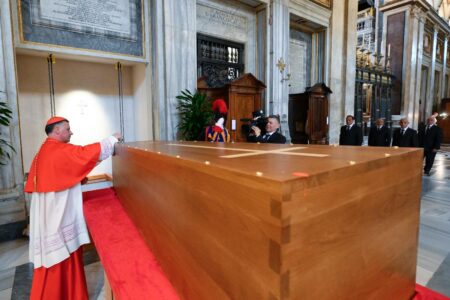
These frequent visits began with his first trip international papal trip to Rio de Janeiro in July 2013, and it became a habit.
First canonically crowned in 1838 by Pope Gregory XVI and a second time in 1954 by Pope Pius XII, the Salus, as it is colloquially called, has a history of miraculous tendencies and is currently housed in the Pauline Chapel, also known as the “Borghese” chapel, of Saint Mary Major.
According to tradition, the basilica was constructed on the site of a miraculous snowfall. As the story goes, Mary appeared to both Pope Liberius (352-366), and a pious couple in a dream, asking that a church be built in her honor at the site of a snowfall that would take place the night between Aug. 4-5 – a rare occurrence in Rome generally, let alone during its hottest season.
Tradition holds that when the snow fell, Pope Liberius traced the outline of the church in the white dust that covered the ground and construction began. The basilica was finished a century later by Pope Sixtus III (432-440), after the Council of Ephesus in 431, which declared Mary to be the Mother of God.
A special feast was then created for the “Dedication of the Basilica of Saint Mary Major,” which is marked every year with a 3-day celebration culminating with a final Mass during which a shower of white flower petals will fall from the basilica’s ceiling to commemorate the miraculous snowfall in 358.
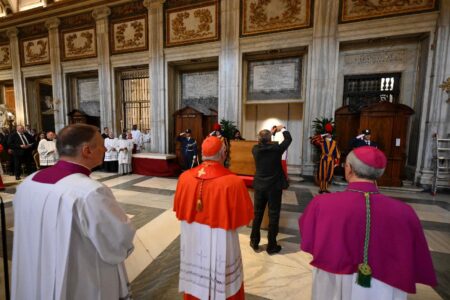
Pope Francis led a Vespers service for the Aug. 5 feast for the first time in his papacy in 2024, praying silently at the front of the basilica as a shower of white rose petals fell from above. He visited the Salus icon after, before returning to the Vatican.
Legend has it than when the Salus came to Rome after being discovered by St. Helen in the 4th century, miracles began to occur.
It is said that Pope Gregory the Great brought the icon to St. Mary Major in 590 as part of a procession praying for an end to one of the deadliest plagues in the history of Rome. At the time, an image of Saint Michael was seen above a spot known as the “Mole Adriano” putting his sword back into its sheath. The plague ended, and the Mole was then given its current name, Castel Sant’Angelo.
At the end of the 16th century, another plague that had broken out ceased when Pope St. Pius V carried the Salus in procession to St. Peter’s Basilica, furthering its miraculous reputation.
The current chapel housing the icon was ordered by Pope Paul V in 1605, and it was visited by Pope Pius XII in 1950 after he proclaimed the dogma of the Assumption of Mary into heaven. He paid homage to it again in 1954 when he crowned it in St. Peter’s Square for the centenary of the dogma of the Immaculate Conception.
Pope Francis was the latest in a string of popes to who have had devotions to the icon, however, his was deeper and more intense.
In a sense, the icon, and the basilica that houses it, embodies much of what Francis himself was about – from the “miracle” he said he experienced at the beginning of his papacy, to his deep Marian devotion, his emphasis on a maternal church, and his longstanding desire to be close to the people and to share in their lives in a mutual relationship of prayer and support.
Now, he has ensured this dynamic will accompany him not only in death, as it did in life, but also in the future, for centuries to come.
Follow Elise Ann Allen on X: @eliseannallen
